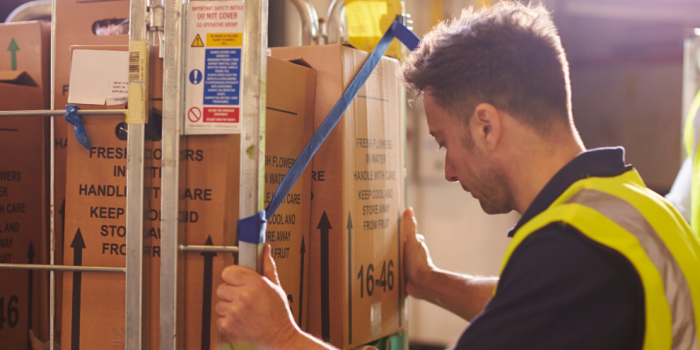How to Load a Roll Cage Safely
Ensuring the correct and safe loading of roll cages is vital to preventing injuries and accidents. According to the Health and Safety Executive (HSE) about a third of accidents in businesses that use roll cages are related to their improper loading or misuse. Injuries caused by the incorrect loading of roll cages can be both long-term and short-term. It’s also paramount to ensure the safe movement of a roll cage, as fully loaded they could weigh 500kg or more.
Roll cage related injuries
The most common problem associated with roll cages is a repetitive strain injury. Repeatedly loading and unloading a roll cage can cause this sort of injury. The way to prevent this is by learning how to load a roll cage safely. Workers should be trained in the correct way to lift and move heavy goods. A safer way to lift is by nesting and bending the knees, to avoid stress and strain on their back. Workers should also be given frequent breaks to rest.
Safe loading advice
To prevent accidents and long or short-term injury, it’s essential to train staff on how to load a roll cage safely. Here are a few general rules of thumb based on the HSE guidelines.
- Always inspect a roll cage before use, including the wheels and castors
- Before loading ensure the roll cage is stable on a flat surface, with the brake applied
- Packages should be stacked in layers rather than columns. This way it’s less likely they’ll get overturned. Packages stacked in layers will be more stable when moved.
- Always stack heavier items at the bottom to lower the centre of gravity, and reduce the risk of the items falling.
Safe movement in the workplace
In order to encourage the safe movement of roll cages in the workplace, several rules should be put in place. These can include the following.
- Limit moving cages to one at a time
- Move cages no faster than a slow walking pace
- Push the roll cage rather than pull
- Take extra care on ramps or uneven surfaces
It’s important to take special care when moving roll cages. Moving them faster than walking pace can increase momentum, and risk of accidents.
Roll cage repair and maintenance

Another way to prevent roll cage related accidents is with regular maintenance. It’s vital to check for a damaged roll cage, especially the castors and wheels. It could be time for a roll cage refurbishment, which will help to prevent future accidents.
At Distribution Maintenance, the services we offer can minimise problems with roll cages. We offer the safe transportation and delivery of roll cages, along with roll cage repair. We have over 36 years of experience in the repair and refurbishment of transit equipment. We provide a dependable repair service to a wide range of industry sectors and supply new and refurbished roll cages. We understand the importance of safe transit equipment to your business.
These are only recommendations and basic guidelines. For official health and safety advice please refer to the HSE website.









